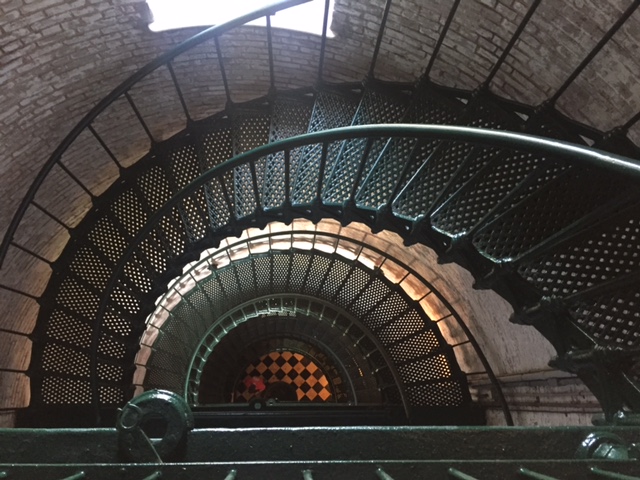
The Twelfth Studio Session featured the documentary film called: “Stutz”. The session was held on Saturday, February 25, 2023 and was facilitated by William Bergquist and Ronit Bisson.
Introduction
“Why are you here?” That’s the first question psychotherapist Phil Stutz asks every single one of his patients, including Jonah Hill, whose new documentary “focuses on the therapist who changed his life.” Unlike many therapists whose primary approach is to sit back and listen, Stutz prefers to take a more active role in the process: He says his goal is to find out what his patients truly want and give them tangible steps to get there. As seen in the film, Stutz’ methods are strangely beautiful, plain but powerful–and may be controversial. This is certainly a distinctive movie about psychotherapy that should be viewed by anyone engaged in this challenging enterprise.
Discussion
Studio participants focused in this Studio session on the issue of boundaries in psychotherapy and the ways in which our clients teach us as much as we “teach” them. Obviously, this is also an intriguing piece of psychotherapeutic history—and during the studio we will be discussing the unique perspective that is gained when both the therapist and patient/client are reflecting on the therapeutic engagement (much as was the case in Lewis Breger’s Psychotherapy: Lives Intersecting that we used in several classes, with Dr. Breger being with us in person).
Questions
1. What do you most like and least like about the approach that Dr. Stutz takes in his work as a psychotherapist?
2. Do you think that Dr. Stutz’ own physical challenges influence how he conducts therapy or how his clients/patients interact with him?
3. Is the patient/actor/film producer being overly positive in his appraisal of Dr. Stutz’ work? Is there some transference that has never been resolved – and is this even a relevant issue?
4. What do you think of Dr. Stutz’ “formula” for helping to improve the life of his patients/clients?
5. Do you think this is a “realistic” portrayal of the therapeutic relationship or is this just as “theatrical” as in the TV series “In Treatment” and other movies/TV series portraying psychotherapy?
6. What is it that we are most likely to learn from the clients we serve as psychotherapists?
The Studio Process:
Participants independently viewed the film “Stutz” ahead of time. The Saturday session was conducted virtually using Zoom. Participants shared personal perspectives on the film as well as engaged in dialogue regarding the psychological ramifications of the movie’s theme.
Following is the recording of this complete studio.
. . .
Notes were prepared by Bill Bergquist, Sandra Hill and Joel Rothaizer prior to the studio session. Following are the notes:
Notes from Bill Bergquist
(1) GENERAL OBSERVATION: Dr. Stutz and Jonah Hill seem to respect and care about one another. Both Stutz and Hill avoid emotions by making jokes. [Is Stutz being narcissistic in doing this movie?]
(2) THERAPEUTIC STYLE: Stutz’s distinctive style: use of humor, “dirty words and notecards. He provides tools (active) rath than passively sitting back (Passive). Use of simple images rather than complex words [regression in the service of the ego] We want our friends to listen and our therapy to give advice (it is usually the opposite) [Stutz seems to have a Jungian perspective mixed with positive psychology.]
(3) PARKINSON’S DISEASE: need to preplan every day (the case with many sustained illnesses). “Parkinson’s makes me aware of time. [Role of physical state in promoting mental health: health psychology]
(4) HANDHOLDS AND HOPE: Relationships are handholds that bring us back to life. Value of Journalling (unconscious) [Progoff/Jung]. Symptom-relief as a way to provide hope on the way to work of the deeper issues.
(5) DENIAL AND DEATH: Death of a sibling (at a time when we are most fearful of death) [Mahler] “That could happen to me.” Collective investment in denial takes a great deal of energy.
(6) PART X: what keeps us blocked (the villain that provides us with something to fight against). Pain, uncertainty and constant work are what we MUST LIVE WITH. Our Part X provides us with something to overcome. Create something new in the midst of adversity. [We (our ego) are fighting the superego – not the Id.]
(7) VULNERABILITY: How can I be vulnerable about being vulnerable? Once things get intimate, you don’t know what the fuck will happen [chaos –hoping for order] You can’t move forward without being vulnerable. You reach out to the world and say I need help.
(8) APPRECIATIVE PERSPECTIVE: The worst it is the better we did. String of Pearls: a series of behaviors. They are all equally important. Each behavior moves us forward. Each behavior has a “turd” inside it. Each pearl has a turd inside it.
(9) THE SHADOW: The Shadow is what we are ashamed of. What we wish we were not but can’t get rid of. The shadow needs attention from you. Needs to be include in my life. If you don’t pay attention to the Shadow then he will mess you up.
(10) THE SNAPSHOT: the realm of illusion. Looking for the perfect something. A snapshot has no depth or movement.
(11) THE MAZE: request for fairness leaves us stuck. I devote all of my energy to being angry about the unfairness–whereas, the unfairness helps to free us.
(12) ACTIVE LOVE: Imagine living in a world that is saturated in love,. Send all the love toward someone you hate. If I can be “one” with that bastard, then I can love anyone.
(13) RADICAL ACCEPTANCE: Can’t say anything negative about yourself. “Squeezing the juice out of the lemon.” Finding something of value in the negative. All events have value. [appreciative perspective]. Can’t say anything negative about yourself. [John Preston: the engagement in any action rather than remaining inactive requires virtually all brain functions: the challenge of “will power”]
(14) THE SUN: The sun is always shing up there—you are aware of the sun once you break through the clouds. Choose the positive. When you make this choice you feel good about yourself. We have an unstoppable will to move forward.
(15) THE GRAEFUL FLOW: Concentrate the gratefulness on something small. Continue the flow of gratefulness. Keep adding new things. Part X says you shouldn’t be grateful, given that you are always getting screwed. Part X forces you to look at the cloud (the devil is talking).
(16) SNAPSHOT: Take a picture of yourself at appoint of greatest importance [Schemata: we organize our memories around this moment.]
(17) LOSS PROCESSING: potency of non-attachment. We can pursue something, but no be attached to having it. I can lose it. Image grasping this thing (like you are grasping the limb on a tree). You are afraid to let go, but when you do let go it is a slow and gentle fall. Say: “I am willing to lose everything.” You land on the sun and burn up. You become part of the sun and radiate outward in all directions positive and loving energy. You discover that there are many suns everywhere. There is a great deal of love. After loss (and death) t here is rebirth [remarriage process] Something comes alive again.
(18) RED BOOK: [Stutz and Jonah are looking at Jung’s Red Book near end of the movie]
___________________________________________________________________
Notes from Sandra Hill and Joel Rothaizer
We both watched the movie, and don’t know that we have a lot of profound or deep thoughts about it. Some initial reactions:
We liked Stutz. He seemed like an authentic, genuine, vulnerable, caring human being, someone we’d enjoy having dinner with.
From an Integral Theory point of view, different kinds of psychotherapy are appropriate for different levels of adult development, depth of spiritual evolution, personality types, etc. Stutz presents his approach as a one-size-fits-all, which is a limited perspective. For some people the approach would be great (e.g. the man who made the film). For some not. It’s within the range of being ethically appropriate. The question of “appropriate for who” is an open one.
We don’t really have an opinion on the extent to which Stutz’s medical condition impacted his form of psychotherapy. It would be easy to make a story about it, either way.
We’d have to watch the movie again to provide more subtle responses to some of the other questions. At times Stutz maintained the position of being open to learning from his client while still maintaining what most of us would consider a professional boundary, at other times this was more problematic (e.g. describing his dreams).
We hope your dialogues go wonderfully,






